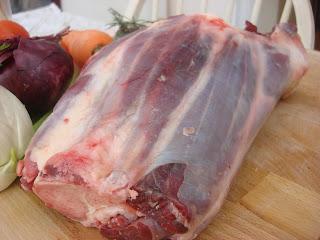This is one post I could not resist to share with you, Swedish meatballs, especially since Tonight the Euro vision song contest is not only held in Sweden but is held in Malmo where all my family are from.
I have wanted to share my very very old family recipe for Swedish meatballs for quite sometime but thought that this was the perfect opportunity to do so.
In Sweden it is not only a family favourite but also a fast food. Meatballs are served as fast food in kiosks all over the country, after a heavy night out you may be tucking into a greasy burger or kebab whilst Swedes munch on this spherical goodness and are always served in the same format, meatballs, mash, gravy and lingon berry sauce, NOT CHIPS!!!! Sorry to ruin the illusion that the famous furniture flat packer has bestowed upon you but meatballs and mash belong together. Do not think in anyway shape or form that these are any thing like Ikea meatballs, for one thing they are packed with far more flavour and are totally horse free, I kid of course. The thing is about meatballs is that they are not only a celebratory dish or a home cooked meal, they are served cold in sandwiches. It is fair to say that in Sweden the meatball is King.
I grew up knowing that as least once or twice a week I would have meatballs and mash for my supper. Such a love has developed for the spherical meaty goodness that the English side of my family demand meatballs must be served alongside the turkey on Christmas day, that’s right my friends, such is the power of the ball that it has found its way onto our table and into our hearts.
This recipe is the genuine article, this was my great grandmother’s recipe that has been passed from generation to generation until finally the meaty torch has been passed to me. Fortunately for you I cannot keep a secret. Each person who has come into contact with the holy grail of meatballs has put their own twist on it to make the recipe their own. For instance my mother uses half pork and half beef, my grandmother would sometimes use veal mince, but I prefer all beef and lots of chopped dill, also the way that I make the meatballs is a little less complicated. I do think that this is the quintessential Swedish recipe and is synonymous with Sweden, as well as beautiful blond women, Abba, and naughty videos. There is absolutely no point in making a small batch, this is a dish to be shared with family and friends and always served with lingon berry sauce.
You will need:
For the meat balls:
1.25kg of beef mince (not lean because you need the fat)
150g of fresh white breadcrumbs
1/2 tsp of all spice
325g of white onions blended in the food processor
5 tbsp of freshly chopped dill
2 large eggs
4 tsp of swedish piffi Krydda or 3 tsp of all purpose seasoning
50g of butter
1 tsp of cracked black pepper
1 tsp of dijon mustard
Firstly preheat the oven to 180 degrees c and line a couple of baking trays with foil. Blend the white onions in the food processor until it is almost a paste, place half of the paste into a bowl, and the other half into a frying pan with the butter. Fry the onions in a frying pan with the butter and 5 tbsp of chopped dill, fry until the onions are soft and are starting to colour, set aside to cool. In a very large bowl mix the minced beef, eggs, breadcrumbs, raw onion paste, all spice, black pepper, piffi krydda or all purpose seasoning, dijon and the cooled onion and dill paste, mix by hand until throughly combined.
Roll the meatballs into ping pong sized balls and place onto the prepared baking trays leaving a little space between them. I have found this is the easiest way to cook them whilst retaining all of the flavour. My mother usually fries the meatballs in butter in batches, I find this very time consuming and makes the balls fattier than they have to be. Bake the meat balls for twenty minutes until throughly cooked through. When they are cooked place them to one side.
For the Sauce:
500ml of beef stock (you can use gel stock pots)
300ml of double cream
50g of butter
50g of flour
1 tbsp of worcestershire sauce
3 tbsp of chopped dill
2 tsp of piffi krydda or all purpose seasoning
2 heaped tsp of white sugar
1 tbsp of honey dijon
maldon sea salt to taste
cracked black pepper to taste
The cooking juice from the meatballs
On a medium heat melt the butter in a large sauce pan and add the flour, stir it until is becomes a paste and the flour is cooked out and then add the beef stock little by little whisking as you go to create a smooth sauce. When the sauce is smooth add the cream, honey dijon, piffi krydda, sugar, worcestershire sauce, and the cooking juice from the meatballs, whisk together until the sauce is slightly thick and can coat the back of a spoon. Add the dill and then taste the sauce for seasoning, I would at this point season with salt and pepper. Add the cooked meatballs to the large sauce pan and heat through. Simply perfect.


















